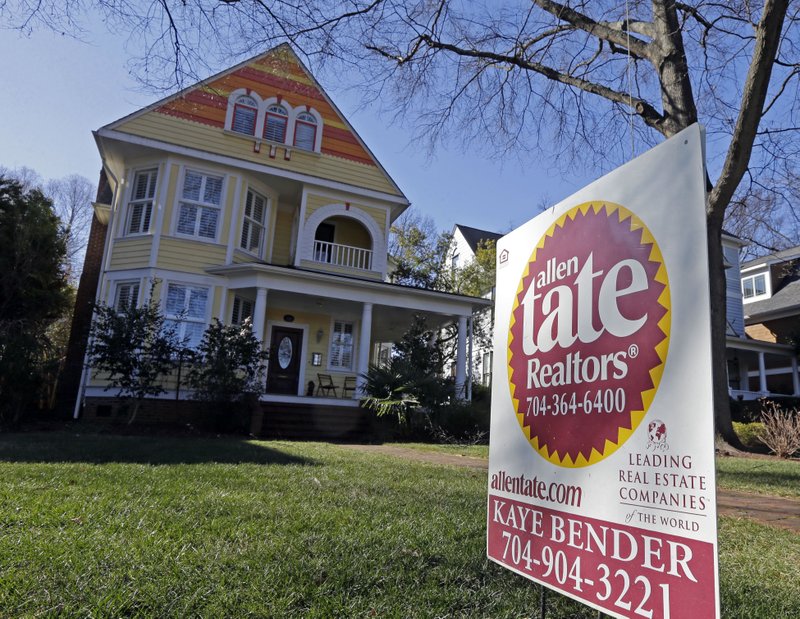WASHINGTON -- The National Association of Realtors said Monday that sales of previously owned homes tumbled 4.9 percent in January to a seasonally adjusted annual rate of 4.82 million.
Relatively low mortgage rates and steady job growth have yet to spur more activity from buyers and sellers, raising the possibility of either a spring sales rush or a second straight year of numbness in the real estate market. Few properties are being listed for sale, would-be buyers are holding off on purchases and snowstorms are cutting into traffic at open houses.
"We're starting to see big concerns about pricing and affordability," said Jacob Oubina, a senior economist at RBC Capital Markets LLC in New York. "There is concern about lack of supply of affordable housing and we're not just talking about cheap housing. Folks are finding out they are priced out of the market."
Weak sales in 2014 had set up expectations of a strong rebound in 2015, yet signs of that resurgence have yet to appear. The addition of roughly 1 million new jobs over the past three months has failed to make much of a dent in home-buying.
Homes did sell at a rate 3.2 percent faster than January 2014, but that increase largely reflects the brutal winter weather at the beginning of last year that depressed home-buying and caused the entire U.S. economy to briefly shrink. The noticeably more robust U.S. economy coming into 2015 was supposed to buoy sales, but the market has barely stirred so far.
"The weather hit is nothing like the scale of the damage seen last winter, but we would not now be surprised to see a further decline in activity in February," said Ian Shepherdson, chief economist at Pantheon Macroeconomics. "The underlying trend in sales is more or less flat."
Few properties are coming onto the market. Just 4.7 months of supply were listed for sale at the end of December, compared with an average of 5.2 months during 2014, according to the Realtors.
Nor have builders ramped up construction. Housing starts slid 2 percent in January, according to a report from the Commerce Department last week.
The limited supply of homes can lift prices to higher levels, which may then lead would-be buyers to wait until they have more choices. Weekly mortgage applications fell 13.2 percent, the Mortgage Bankers Association reported last Wednesday.
Affordability has become a problem as prices have climbed at a faster clip than incomes. The national median home price rose 6.2 percent over the past 12 months to $199,600. That has priced out many first-time buyers, who represented just 28 percent of sales compared with their historic share of 40 percent.
Increases of this size clearly outpace income gains and general inflation and is probably caused by a lack of supply, Lawrence Yun, NAR chief economist, said at a news conference Monday as the figures were released. This is not a "healthy" sign, he said.
The decrease in supply is a "puzzle" and is "not welcome news," Yun said. It could either be because of the lock-in effect in which current owners don't want to give up their already low mortgage rates or because lingering uncertainty about the outlook for the economy, he said.
Mother Nature is also beginning to take its toll. Snowstorms in the Midwest and Northeast likely kept would-be buyers away, further crimping sales.
Buyer traffic for newly built homes slowed in February, according to the National Association of Home Builders/Wells Fargo sentiment index.
The Realtors said previously in a separate report that the number of signed contracts in December fell 3.7 percent, suggesting that sales will remain under pressure in the coming months.
Sales slid in all four major geographical regions last month: dropping 6 percent in the Northeast, 2.7 percent in the Midwest, 4.6 percent in the South and 7.1 percent in the West.
Possibly hurting sales further, mortgage rates have crept upward for the past two weeks, ending what has previously been a yearlong slide.
Average 30-year fixed rates were 3.76 percent last week, according to the mortgage giant Freddie Mac, the Federal Home Loan Mortgage Corp. The average has risen from 3.59 percent at the start of February.
Information for this article was contributed by Josh Boak of The Associated Press and Nina Glinski of Bloomberg News.
Business on 02/24/2015
